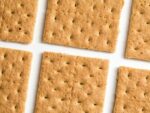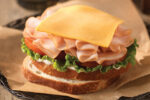Cinnamon sticks are a familiar sight in kitchens around the world. Their spicy-sweet aroma evokes thoughts of warm desserts and cozy nights by the fire. But have you ever wondered – can you actually eat a cinnamon stick, or are they just for flavoring?
While you can technically eat cinnamon sticks, there are some important factors to consider first regarding safety, palatability, and potential benefits. This complete guide covers everything you need to know about consuming cinnamon sticks, including:
- Are Cinnamon Sticks Edible?
- Nutritional Value
- Potential Benefits
- Safety Concerns and Risks
- How to Properly Consume Cinnamon Sticks
- Recommended Daily Intake
- The Best Uses for Cinnamon Sticks
Let’s start by looking at the basic edibility of cinnamon sticks.
Are Cinnamon Sticks Edible?
Cinnamon sticks, also called quills, are made from the dried inner bark of the cinnamon tree. They are the same product as ground cinnamon, just in stick form. So yes, cinnamon sticks are completely edible!
However, that doesn’t necessarily mean they are intended to be eaten whole. Cinnamon sticks have an extremely tough, woody texture that makes them difficult to chew. Their intense cinnamon flavor can also be overwhelming on their own.
For these reasons, cinnamon sticks are more commonly used to infuse foods and liquids with flavor rather than eaten outright. That said, chewing on a small piece of a cinnamon stick is generally not harmful. Just don’t expect it to be very tasty or enjoyable!
Now let’s explore the nutritional value of cinnamon sticks.
Nutritional Value of Cinnamon Sticks
Cinnamon sticks and ground cinnamon have very similar nutritional profiles. Just 1 teaspoon (2 grams) of cinnamon contains:
- 6 calories
- 2 grams carbohydrates
- 1 gram fiber
- Trace amounts of vitamins and minerals like calcium, iron, and manganese
Cinnamon is especially high in antioxidants, which can help neutralize damaging free radicals and reduce inflammation. The essential oil in cinnamon bark contains the compounds cinnamaldehyde, cinnamyl acetate, and eugenol, which provide its flavor, aroma, and health effects.
So while not a significant source of vitamins and minerals, cinnamon sticks can provide antioxidants and unique plant compounds.
Potential Benefits of Consuming Cinnamon Sticks
A moderate intake of cinnamon sticks may provide the following health benefits:
-
Blood sugar control – Multiple studies show cinnamon can lower blood sugar levels and increase insulin sensitivity. The cassia variety found in most cinnamon sticks is especially potent.
-
Lower cholesterol – Cinnamon may help reduce total and “bad” LDL cholesterol levels while raising “good” HDL cholesterol.
-
Anti-inflammatory – The antioxidants in cinnamon have strong anti-inflammatory properties that can help reduce pain and swelling.
-
Antimicrobial effects – Research indicates cinnamon acts against certain bacteria, yeasts, and fungi, including the candida strain.
-
Brain function – Some animal studies note improvements in motor function and recognition memory. More research is needed to confirm effects in humans.
-
Cancer prevention – Early research shows potential anti-cancer benefits of cinnamon, likely due to its antioxidant content.
The main caution is that these effects have not been strongly confirmed in human studies. More research is still needed to verify cinnamon’s health effects.
Safety Concerns and Risks of Eating Cinnamon Sticks
Before consuming cinnamon sticks, be aware of the following safety concerns:
-
Choking hazard – The hard, woody texture makes cinnamon sticks a potential choking risk, especially in children. Chew very thoroughly or avoid altogether.
-
Mouth/stomach irritation – Cinnamon’s volatile oils can cause mouth sensitivity or stomach upset, especially when eaten in excess. Introduce slowly.
-
Liver damage – Coumarin, a compound found in cinnamon, may cause liver damage if consumed in extremely high doses over long periods. Moderation is key.
-
Medication interactions – Cinnamon may interact with certain medications including diabetes drugs, anticoagulants, and antibiotics. Consult your doctor.
-
Contamination – Low quality cinnamon sticks may contain traces of toxic compounds like heavy metals or pesticides. Source high quality organic sticks.
The key is to enjoy cinnamon sticks cautiously and in moderation. Never eat more than the recommended serving size.
How to Properly Consume Cinnamon Sticks
If you do choose to eat cinnamon sticks, here are some tips for safe consumption:
-
Select organically grown, high quality sticks free of contaminants.
-
Limit stick size to 3 inches long and 0.5 inches wide for easier, safer chewing.
-
Soften the cinnamon stick first by swirling it in hot water or tea to make it less tough.
-
Chew the cinnamon stick very slowly and thoroughly before swallowing to avoid choking.
-
Drink plenty of water to dilute the intense cinnamon flavor and wash any residue down.
-
Use cinnamon sticks to stir beverages for flavor, then remove stick before drinking.
-
Pair cinnamon sticks with something sweet like fruit, oatmeal, or chocolate to balance the pungent taste.
-
Grate a small piece of a stick over desserts or coffee rather than eating the whole stick.
Exercising caution and moderation allows you to safely experience the unique taste and benefits of cinnamon sticks.
Recommended Daily Intake of Cinnamon Sticks
Most health experts advise limiting cinnamon stick consumption to:
-
2-4 grams per day for healthy adults
-
1-2 grams per day for adolescents, elderly adults, pregnant women, and those with liver conditions
To put this into perspective, one 3-inch cinnamon stick weighs around 2.5-5 grams. So health authorities recommend consuming no more than about 1/2 to 1 stick per day, and less for sensitive groups.
Overconsumption of cinnamon sticks could result in side effects due to the presence of coumarin. However, studies show a daily intake of up to 6 grams of cinnamon causes no health risks in most people. Again, moderation is key.
The Best Uses for Cinnamon Sticks
While eating them whole is not ideal, cinnamon sticks have many great uses as a spice:
-
Simmer sticks in soups, stews, oatmeal, cider, and tea to infuse flavor
-
Add to baked goods and desserts like pies, cakes, and custards
-
Use sticks as swizzle sticks for hot chocolate, apple cider, and other warm drinks
-
Make unique crafts like cinnamon stick ornaments, garlands, and potpourri
-
Grate over coffee, pancakes, French toast, and creamed cereals
-
Simmer in homemade potpourri or as an aromatic air freshener
So while crunching on whole cinnamon sticks may not be very enjoyable, they add warmth, visual beauty, and fragrance to so many kitchen creations.
The next time you encounter one of those familiar cinnamon sticks, hopefully this guide gave you a deeper insight into their potential uses and health benefits beyond just flavoring. Feel free to safely and moderately enjoy this warming spice in its natural quill form. Just be sure to start slowly and pair it with something sweet!
https://kitchenbun.com/can-you-eat-cinnamon-sticks-raw-safe/
https://www.thedonutwhole.com/what-happens-if-i-eat-cinnamon-sticks/




